Meat and Health Library
Studies conducted by the University of Otago which show red meat is a predictor of iron and zinc status in early childhood.
Daniels, L., et al (2018). Modifiable “Predictors” of Zinc Status in Toddlers. Nutrients, [online] 10(3), p.306. Available at: http://www.mdpi.com/2072-6643/10/3/306 [Accessed 4 May 2018].
Szymlek-Gay, E., et al. (2009). Food-based strategies improve iron status in toddlers: a randomized controlled trial. The American Journal of Clinical Nutrition, [online] 90(6), pp.1541-1551. Available at: https://www.ncbi.nlm.nih.gov/pubmed/19828711 [Accessed 4 May 2018].
Studies conducted by Universities of Otago, Sydney and Newcastle which show red meat is a predictor of iron status in young women.
- Cheng, H., et al. (2011). Iron status of overweight and obese young women presenting for weight management. Obesity Research & Clinical Practice, [online] 5, p.17. Available at: https://www.ncbi.nlm.nih.gov/pubmed/24231018 [Accessed 4 May 2018].
- Fayet-Moore, F., et al.(2014). Fat Content and Composition in Retail Samples of Australian Beef Mince. Nutrients, [online] 6(6), pp.2217-2228. Available at: https://www.ncbi.nlm.nih.gov/pmc/articles/PMC4073145/ [Accessed 4 May 2018].
- Heath, A., at al. (2001). Can Dietary Treatment of Non-Anemic Iron Deficiency Improve Iron Status?. Journal of the American College of Nutrition, [online] 20(5), pp.477-484. Available at: https://www.ncbi.nlm.nih.gov/pubmed/11601562 [Accessed 4 May 2018].
- Heath, A., et al. (2001). The role of blood loss and diet in the aetiology of mild iron deficiency in premenopausal adult New Zealand women. Public Health Nutrition, [online] 4(02). Available at: https://www.ncbi.nlm.nih.gov/pubmed/11299092 [Accessed 4 May 2018].
- Patterson, A., et al. (2001). Dietary treatment of iron deficiency in women of childbearing age. The American Journal of Clinical Nutrition, [online] 74(5), pp.650-656. Available at: https://www.ncbi.nlm.nih.gov/pubmed/11684534 [Accessed 4 May 2018].
Studies conducted by Deakin University which used lean red meat as a source of protein in combination with strengthening exercise in vitamin D replete to improve muscle health after 65 years.
- Daly, R., O’Connell, S., et al. (2014). Protein-enriched diet, with the use of lean red meat, combined with progressive resistance training enhances lean tissue mass and muscle strength and reduces circulating IL-6 concentrations in elderly women: a cluster randomized controlled trial. The American Journal of Clinical Nutrition, [online] 99(4), pp.899-910. Available at: https://www.ncbi.nlm.nih.gov/pubmed/24477043 [Accessed 4 May 2018].
For more information on red meat and chronic diseases, click here.
For more information on sustainability, click here.
Join myMLA today
One username and password for key integrity and information Systems (LPA/NVD, NLIS, MSA & LDL).
A personalised online dashboard that provides news, weather, events and R&D tools relevant to you.
Customised market information and analysis.
Already registered for myMLA?


